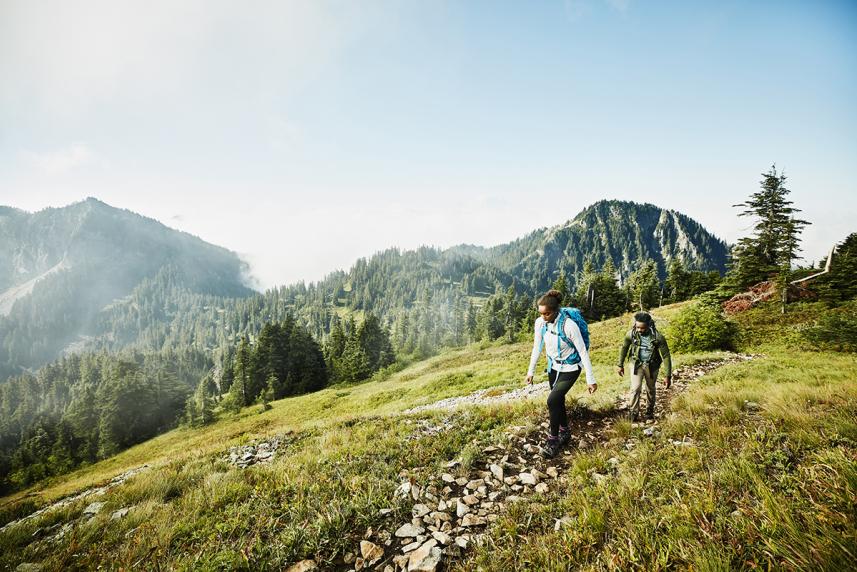
We have you covered — schedule a virtual visit today. No insurance required.

The planet is warming, which means more air pollution and hotter days. Learn why those changes can be unhealthy, and how you can protect yourself.
Climate change is an urgent crisis for the planet we live on. It’s also a crisis for our personal health. In a recent survey of nearly 4,000 medical professionals, 77% said that climate change would cause a “moderate to great deal” of harm to their patients.
We’re not just talking about the health effects of wildfires or hurricanes. Climate change can also create havoc inside your body. And that’s true for all of us, not just those who live near drought-ridden forests or flood zones.
Learn about some of the ways climate change can affect your health, and how you can protect yourself.
You know how the air feels heavier on hot, humid days? Changing weather patterns may make this more common in locations around the world, according to the Centers for Disease Control and Prevention (CDC). And heavy air creates a perfect environment for ozone to form and stick around.
Ozone (the key component in smog) is created when emissions from smokestacks and tailpipes mix with the air. It’s a gas that’s bad for your health. Ozone can affect how your lungs function and make asthma symptoms worse.
Particle pollution is another air-quality threat. Drier temperatures and less rainfall may increase the risk of drought and wildfires in your area. The resulting smoke, ash and dust storms can lead to breathing problems.
What to do about it: Just as you check the weather, you can check daily air pollution forecasts in your area at AirNow.gov. When pollution levels are high:

We have you covered — schedule a virtual visit today. No insurance required.
Scientists use the term “vector-borne diseases” to describe illnesses you can catch from insects, such as ticks, fleas and mosquitos. Common ones in the U.S. include:
Higher temperatures may lead to longer warm-weather seasons, according to the CDC. That means these bugs have a longer time to stay alive and breed.
That said, it’s hard to predict how climate change will impact your risk, says Amesh Adlja, MD. He’s an infectious disease physician at the Johns Hopkins Bloomberg Center for Health Security in Baltimore. Your state and local health departments are the best resource for how vector-borne diseases are changing in your area.
What to do about it: It’s always a good idea to protect against bug bites. Follow these tried-and-true tips:
There’s a “good” layer of ozone that sits about 9 to 18 miles above the earth’s surface. It acts as the earth’s sunscreen, protecting us from too much ultraviolet (UV) radiation from the sun, according to the U.S. Environmental Protection Agency.
But certain chemicals and air pollution have gradually eaten away at the ozone layer. This has increased the amount of UV rays bouncing around the earth’s surface. And that increases your risk of skin cancer, as well as damage to your eyes.
What to do about it: Be sun smart whenever you can. Follow these strategies:
Rising carbon dioxide (CO2) levels mean your seasonal allergies may be worse than ever. CO2 is a harmful greenhouse gas (a gas that traps heat in our atmosphere). It also causes plants to grow faster, which means more pollen and spores get released into the air. Plus, warmer temperatures may give plants more time to pollinate.
A 2021 study found that pollen season in North America is now 21% longer than it was in 1990. The biggest changes were seen in Texas and the Midwest region of the U.S.
What to do about it: Talk with your doctor if you have symptoms such as sneezing, a runny nose and itchy eyes. During peak allergy season you should:
You can buy over-the-counter allergy medications, eye drops and more at the Optum Store and have them delivered right to your door.
Extreme weather can directly impact whole communities. It can cause anxiety, depression and trauma-related symptoms. It can also cause fear and anxiety in people who aren’t face-to-face with these events, explains Scott Beardsley, PhD. He’s a psychologist based outside of Philadelphia and is the associate vice president of clinical quality improvement at Optum.
For example, you might feel stressed after watching the news or reading online stories about a hurricane or tornado. Or you may feel constant low-grade concern about what the planet will be like for your children. Worrying about the future is normal, but there are ways you can cope.
What to do about it: Take action. Here’s how you can reduce your own climate anxiety:
If thoughts and fears about the environment take over your day-to-day life, it may be time to seek help, says Beardsley. If you’re so anxious about climate change that you’re constantly checking the news, having trouble sleeping, feeling depressed or drinking too much, talk to a mental health counselor. (Read more about how stress affects your health here.)
Keep in mind: No one can solve the climate crisis on their own. We all need to take care of our own health before we can help others — and the planet.
Additional sources
Survey of medical professionals: The Lancet Planetary Health (2021). “Views of health professionals on climate change and health: a multinational survey study”
Climate change and air pollution: Centers for Disease Control and Prevention (2020). “Air Pollution”
Bug-borne diseases: Centers for Disease Control and Prevention (2020). “Diseases Carried by Vectors”
Overview of the ozone layer: Environmental Protection Agency. “Ozone Layer Protection”
Sunglasses tips: American Academy of Ophthalmology (2021). “Tips for Choosing the Best Sunglasses”
Pollen season study: Proceedings of the National Academy of Sciences (2021). “Anthropogenic climate change is worsening North America’s pollen seasons”